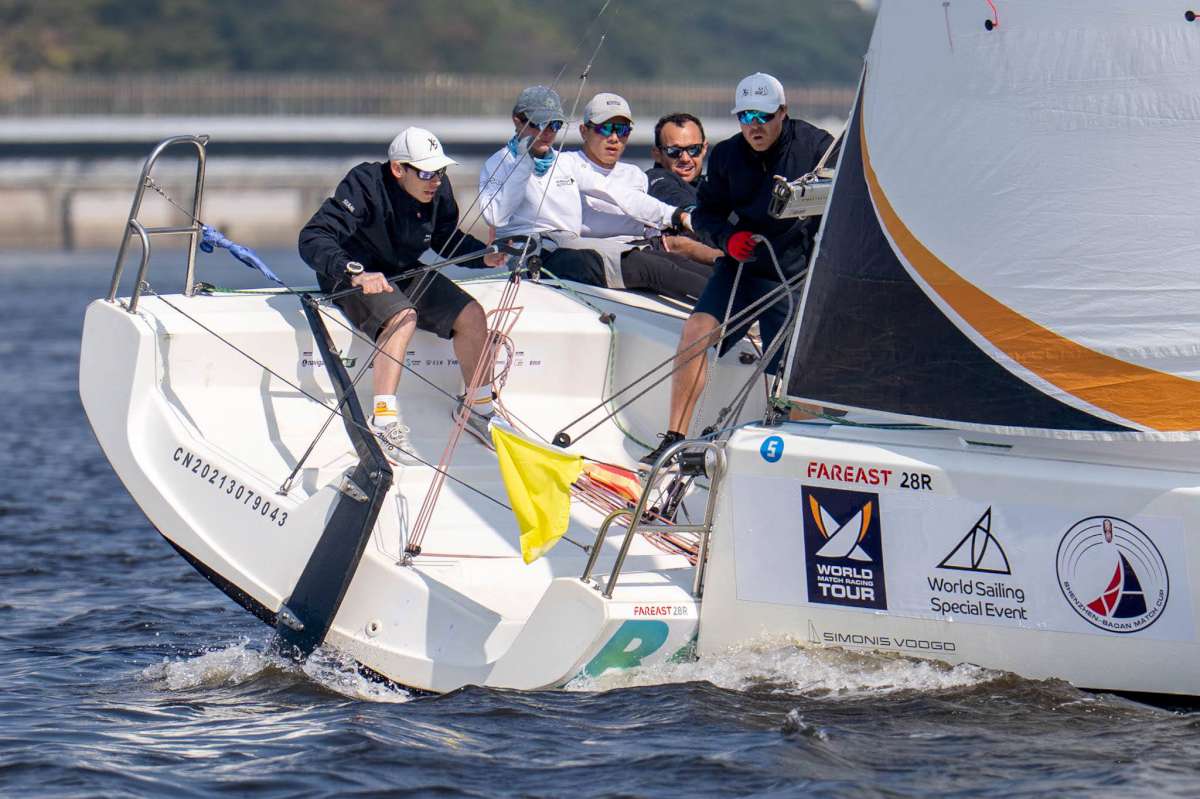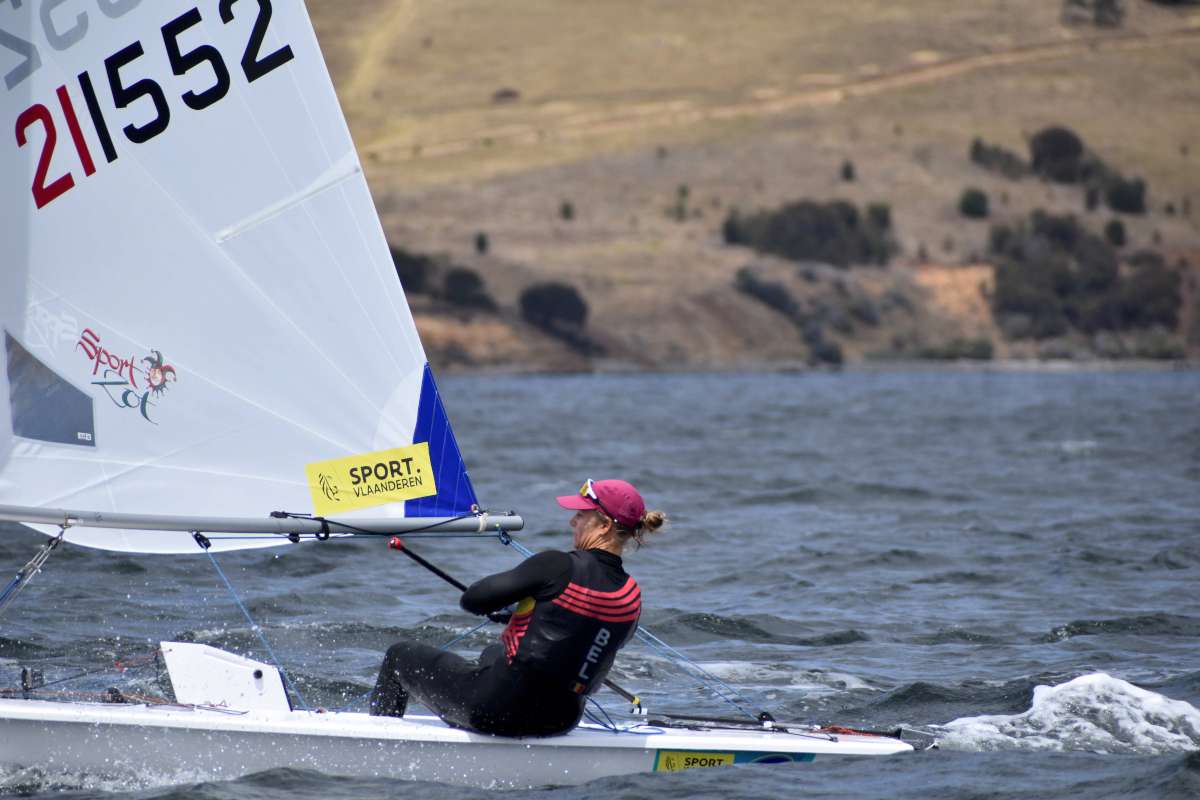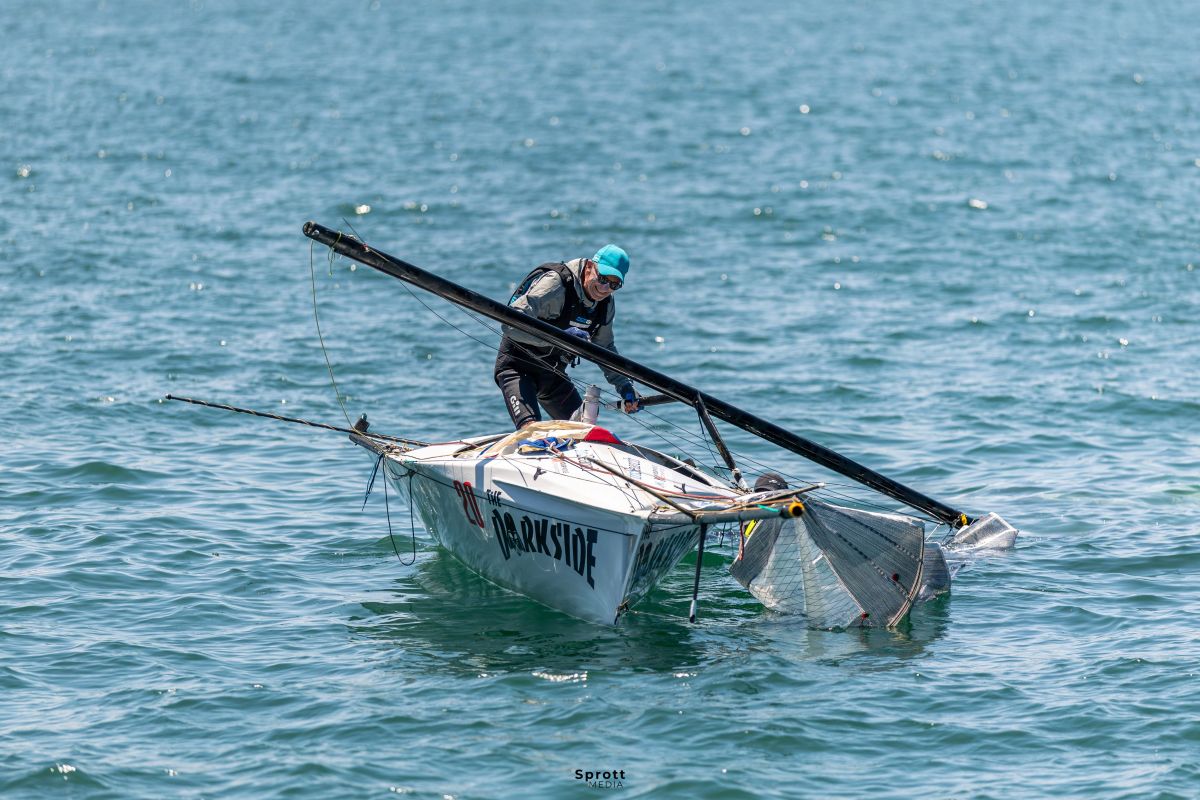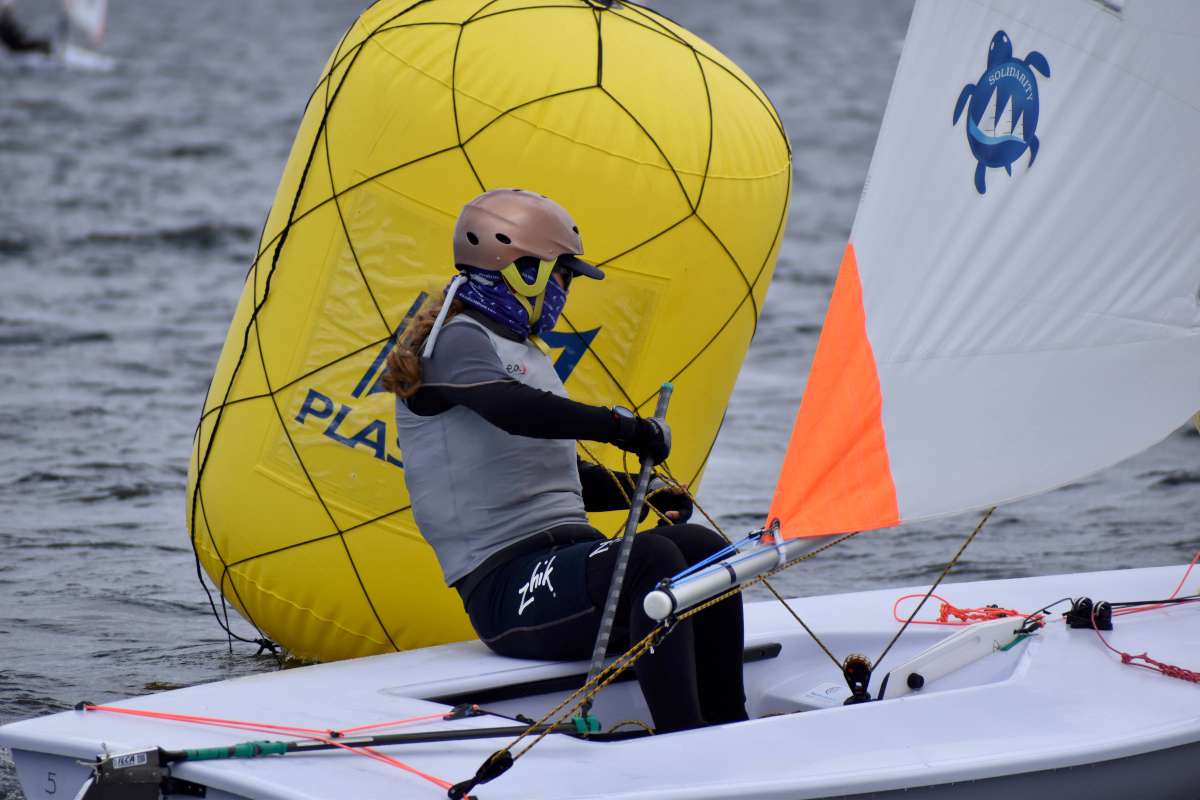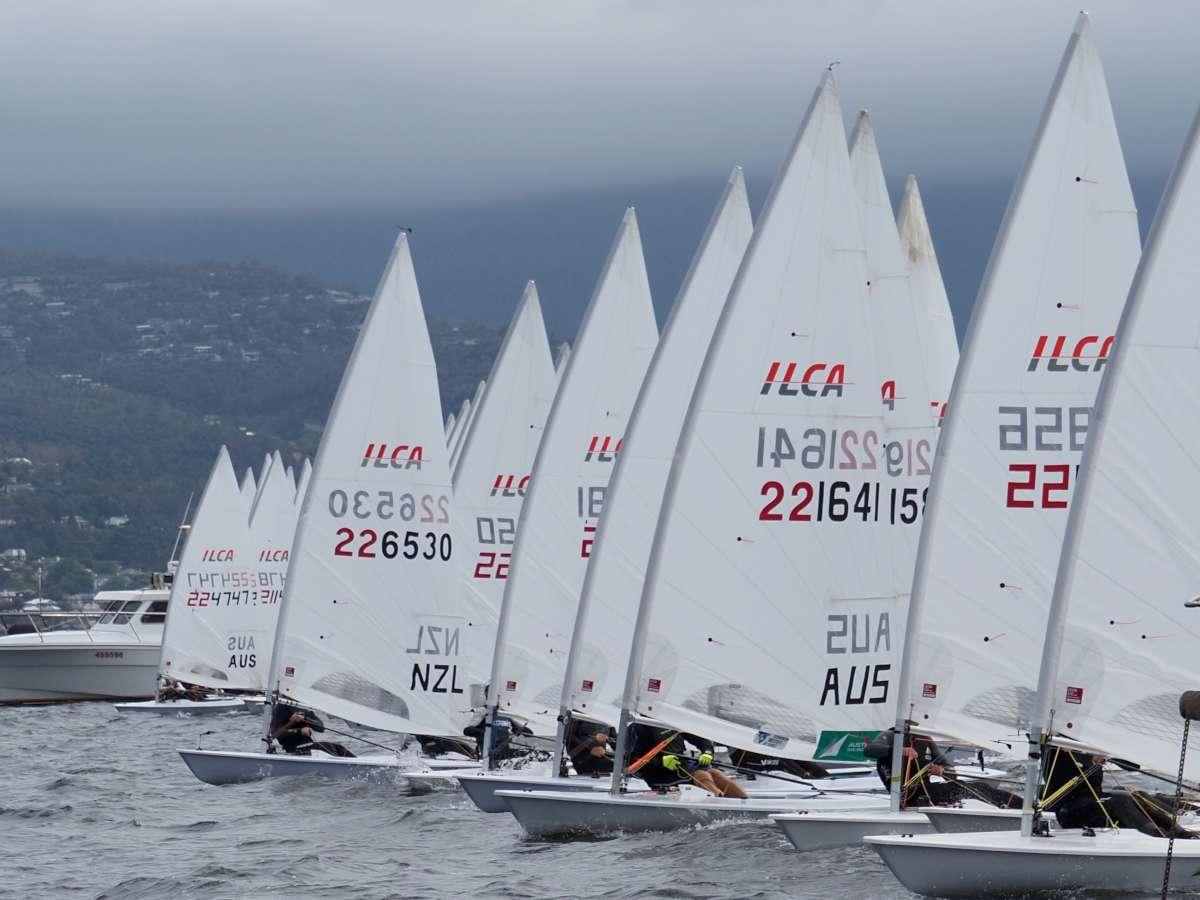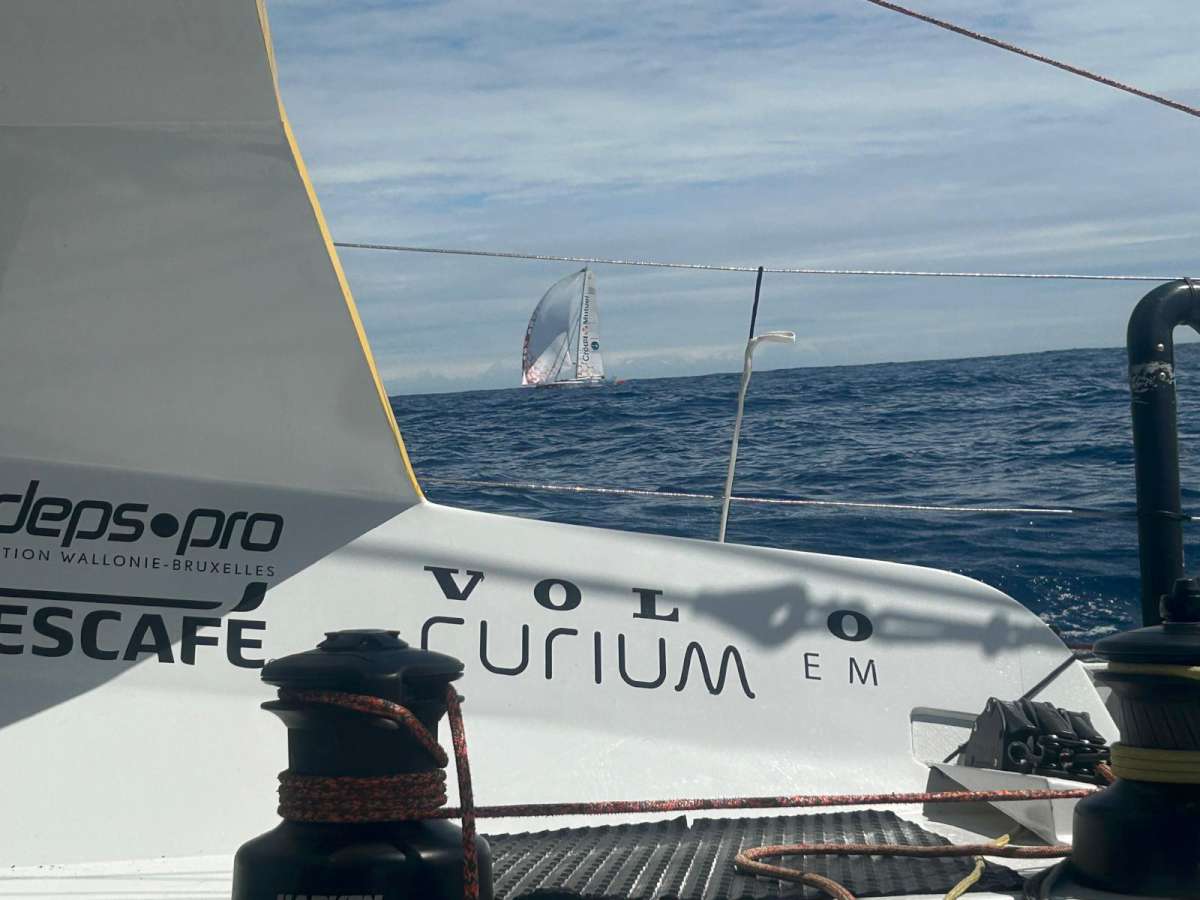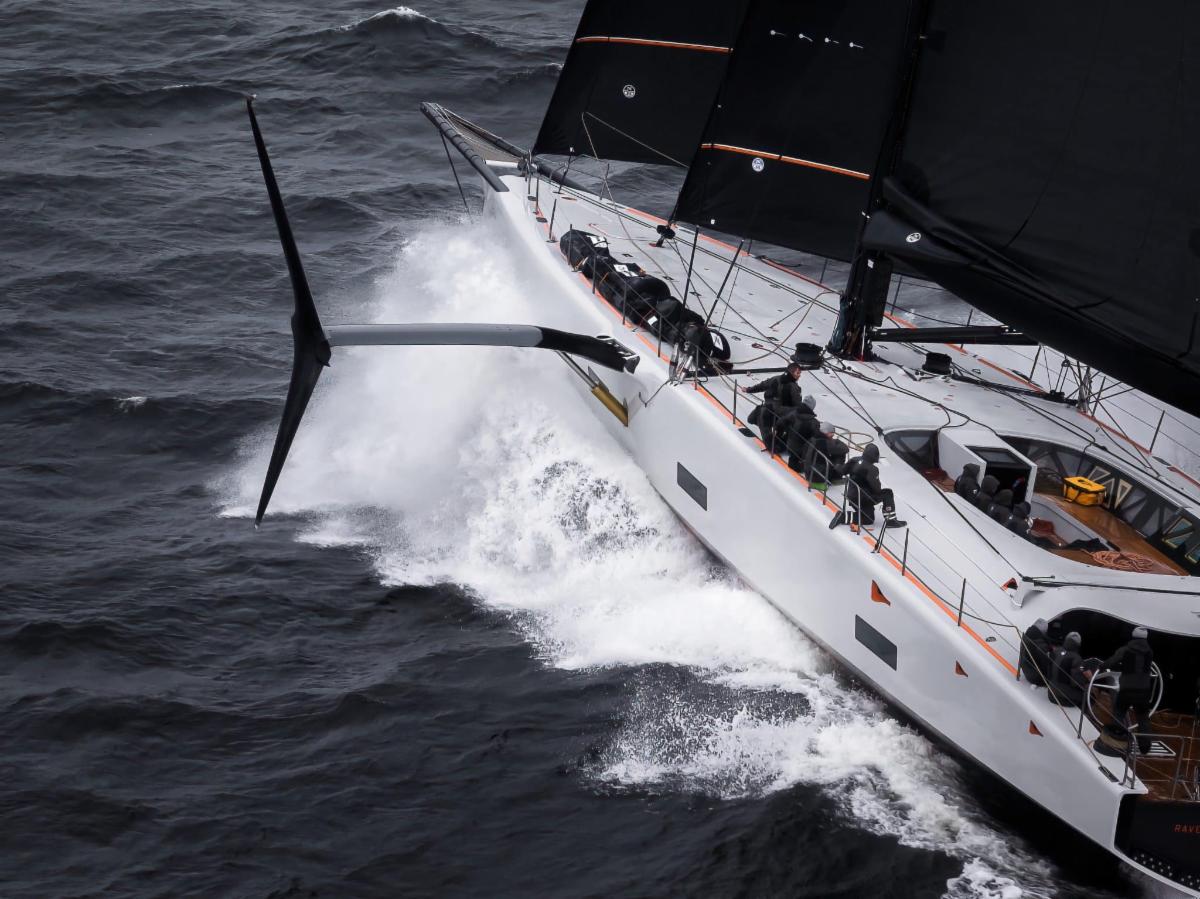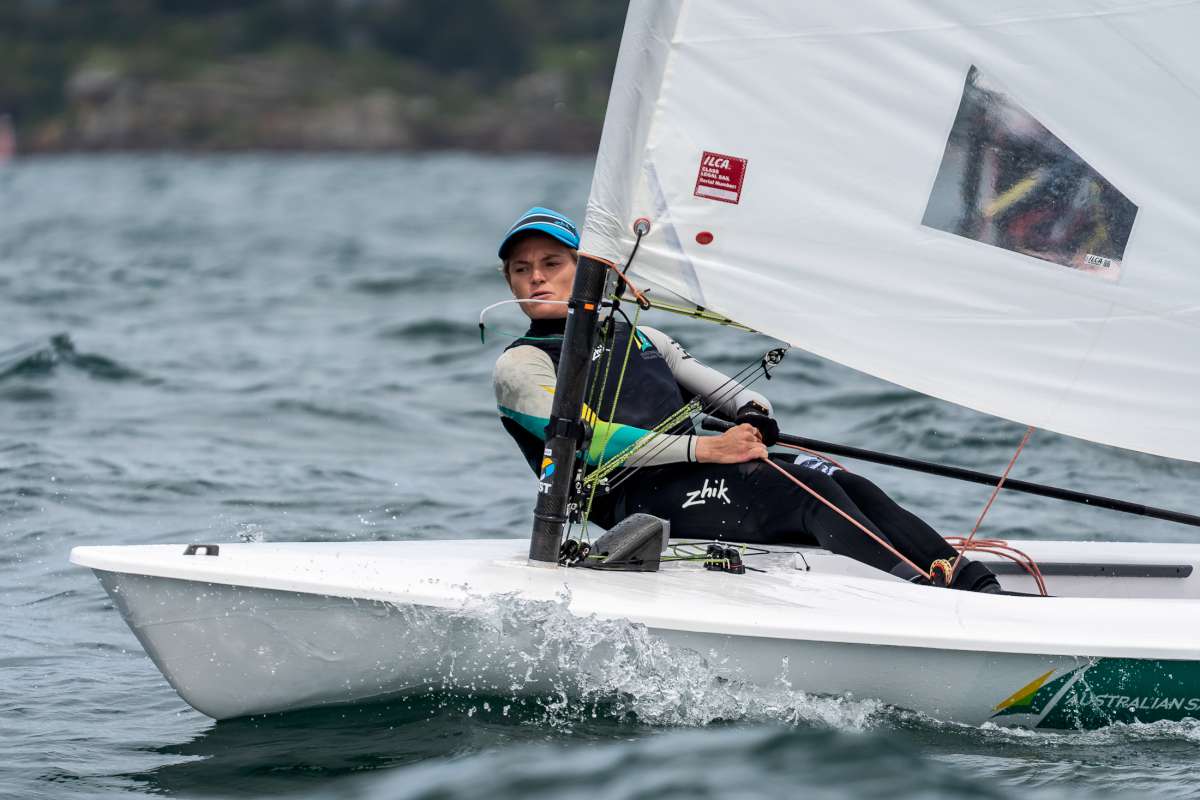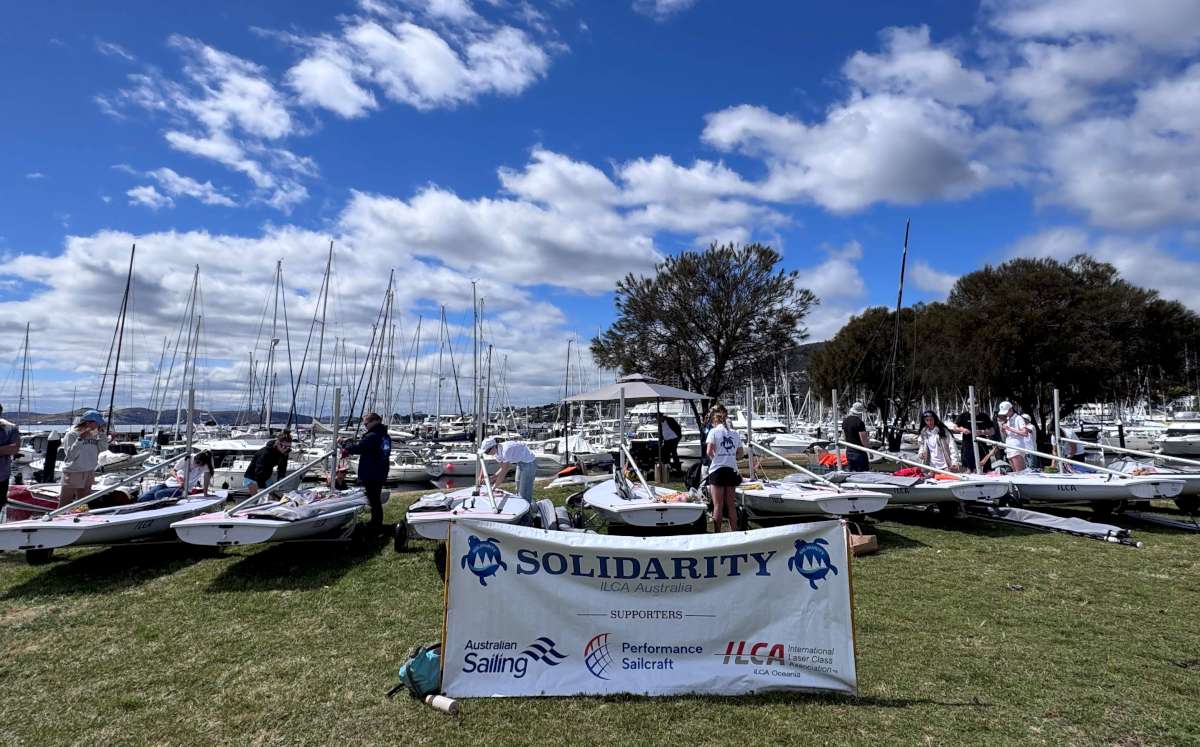My yacht is the first of the Hanse 455 in Australia previously reviewed in CH December 2015 and Australian Sailing
Aug/Sept 2015.
The Hanse boats are built with the European bareboat charter fleet in mind and, as such, lacked a bit of live-aboard finesse. So after some subtle modifications to the interior: extra cupboards in the main cabin, a washing machine, a Rainman watermaker, extra house batteries, a diesel heater for Tasmania and a freezer, finished off the below decks fit out.
On deck the addition of 600 watts of solar panels, a wind generator, davits along with a liferaft makes the deck look somewhat non-racey but definitely live-aboard and cruising functional.
The sailing suite has been upgraded with a Gale Sail storm jib, a Hood screecher or code zero, which is approximately 88 square metres or 200 per cent of the standard self tacker headsail, plus an asymmetrical that is scary to use by one person as it is just enormous. Along with a spinnaker pole to hold out the jib on those downwind cruisy days. The boat is well fitted for most cruising situations even the odd unplanned strong winds.
Bilbungra is easy to sail and remarkably forgiving when pushed hard but, above all, it is quick even when fully loaded for extended cruising. I plan on 6.5 knots for a passage, which is the speed under motor at 1800 revolutions but
I consistently average over 7kn sailing.
Having sailed solo to Port Douglas and back to Sydney it was time for a more adventurous journey.
So I turned right out of Sydney and headed south for the winter and into the wilderness
of Tasmania.
Planning
Basing myself in Hobart at the Derwent Sailing Squadron (DSS) proved how relaxing and enjoyable life in Tassie is. Winter festivals including Dark MOFO and Winter Feast helped stop cabin fever in a sometimes windy and wet Hobart.
But I had dreams of wilder places further south: Bathurst Harbour. Everyone said “only fools and fishermen go to Bathurst Harbour in winter, best time is Feb/Mar”, but I wanted to experience the wilderness when it is wild and empty.
Having read all the guides, principally Tasmanian Anchorage Guide by the Royal Yacht Club of Tasmania, used online information including Maritime And Safety Tasmania (www.mast.tas.gov.au), purchased a National Parks Pass, studied multiply weather sites, talked to a few fishermen and finally stored with eight weeks of supplies, I felt prepared.
All this careful planning and a nice Mother Nature gave me a window to traverse the southern coast from Recherché Bay to Schooner Cove in late August. At 0430 I departed bound for Schooner Cove via Port Davey a trip of some 70 nautical miles.
A steady 15kn to 20kn SE breeze gave me a fast and enjoyable sail across the bottom of Tasmania. Several Albatross wheeled behind me as I sailed between SE and SW cape, ducking between Maatsuyker and De Witt islands. The only company was a lone fishing boat and the caretakers on Maatsuyker island.
Southwest Cape lived up to its reputation with confused seas and gusts coming off the land, bearing no resemblance to the prevailing wind. Surfing past the East Pyramids and rounding Big Caroline Rock, I lined up for the South Passage behind Breaksea Island, but all I could see was sheer rock walls. But as the distance decreased the passage became visible, I dropped the main and under headsail slowly sailed to the entrance of Bathurst Channel in the calm behind Breaksea Island and into Schooner Cove. What a magical day! 75nm in 11 hours.
Port Davey and Bathurst Harbour
After an uneventful first night I was blessed with two perfect days to start my adventures; calm seas and bright sunshine required a stint in shorts.
Launching the dinghy I ventured out to investigate Waterfall Bay, Brambles Cove and Wombat Cove as possible anchorages in the future. However, an approaching low and cautious approach had me moving up to Bathurst Harbour the following day.
The next day dawned cool, calm and, with a morning mist rolling down the channel, magical. After a coffee and breakfast I motored the 8nm to Clayton’s Corner before heading back out and anchoring behind Kings Point. As I wound my way up I passed Joan/Farrell points, I could see the dinghies for the SW trekkers to cross the channel and the high brush they trek through. Glad I have a comfortable bed and shower.
The channel is easy to navigate and was breathtaking with reflections of Mt. Rugby and Mt. Beattie being so photogenic.
Kings Point is a recommended place in strong westerly quadrant winds but expect strong bullets off Mt. Beattie. All the information on Clayton’s wharf was that it was shallow alongside. But as it was calm I slowly nudged in and yes on the corner, 50m off the wharf, it does shallow. But there was a minimum of 2.8m of water at the shallowest and at the wharf over 3m.
After checking the fresh water on the wharf I found it clean, clear and definitely drinkable. I now have a supply to top up from but will definitely put it through a filter. The large tank supplying this tap was full but it would not last long in peak cruising season. If you are desperate and Clayton’s tank is empty, the water at Waterfall Bay is clean although slightly acidic and brown from the button grass above.
Winter strikes back
After two days of settled weather the cold fronts marched in and stopped any major activities. It is hard to take photos that do these storms justice but, from a warm sunny day, the weather forecast predicted a series of cold fronts for the next three days.
At midnight I was rudely awakened as the first crossed the coast; with heavy rain even hail and 50+kn winds howling in the rigging reminding you where you are.
A few days later the sun was out and I headed off on treks ashore, but winter comes back with ten days of fronts and gale force warnings ensuring a quiet time onboard. Bring a supply of books, movies or your favourite activities to relax and wait out the winters worst.
Time for some running repairs, there is always something to fix or planned preventative maintenance to be done.
This is the winter cycle: a few days of brilliant weather for exploring followed by weather that requires you to hide.
Staying put in the roaring 40s puts stress on your ground tackle, anchoring technique and your self; it will find the weakest link. Lots have been written on anchors, snubbers, extra chain weights, second anchors, lines ashore and anchoring technique, I will not go into all of that here but be prepared and leave no chain in the locker, it will not help you there in a blow.
After two 50+kn storms, one in Kings Point and one at Clayton’s Corner, with suitable ground tackle you stay put. Both times it took nearly 30 minutes to persuade the anchor to come out of the thick smelly mud. A deck wash is essential equipment or a bucket and a willing helper.
Keeping in contact with the outside world relies on how your boat is set up, which could include VHF, SSB or satellite communications of some sort. The basic set up of most boats is VHF, so getting weather forecasting information in this area is a matter of location.
Tasmania Maritime Radio (TMR: ) has an extensive VHF/HF radio network with three weather broadcasts daily. Port Davey and Bathurst Harbour are surrounded by mountains, which block VHF as you enter Port Davey all the way to Bathurst Harbour; so all the favourite anchorages, like Brambles Cove, Schooner Cove and Frogs Hollow are in VHF blackout spots.
Once in Bathurst Harbour, however, particularly around Clayton’s Corner, clear two-way VHF was maintained with TMR throughout all weather conditions. If you are planning on cruising around Tasmania consider joining TMR, at a cost of only $40 it is great value and it supports a great volunteer service.
Some places to see, things to do
Clayton’s hut is a must see. Plan a day to look around and enjoy the place. The history, courage and resourcefulness of the people was incredible.
While I was there several plane-loads of tourists visited including a fast boat trip to Bathurst Harbour then lunch at Claytons corner.
During summer it will become very busy. A short stroll up the hill to overlook the two anchorages: Clayton’s and Kings, is for those less inclined to hike higher peaks.
For those more energetic and of a reasonable fitness the 60 minute uphill walk to the top of Mt. Beattie is breathtaking. Views of Bathurst Harbour, the channel and out towards Port Davey are worth the effort. However, you look across and there lays Mt. Rugby it cannot be that hard really?
For the more adventurous Mt. Rugby can give your body the physical workout that it needs. It is recommended to allow five hours to complete the climb and return to the dinghy. But be prepared, the weather can change quickly here and even on sunny warm days at 760m it is always cool and windy.
This hike/climb looks easy from the safety of the yacht but first the scrub is a knee-high tangled mess then waist-high bush and, in places, tunnels under entangled trees. Time to act like a wombat.
You reach the saddle in about an hour, which is over halfway up, the rest looks easy. That last 250m of vertical climb starts slowly but just keeps getting steeper until you are scrambling over, around and under large boulders until finally you arrive at the top.
The views are spectacular and, for those willing, it is worth every bit of lost skin and bruises. The return trip is just as taxing, be aware of that last slope to the dinghy it is steep, slippery and, with tired legs, you can end up sitting down quickly.
A good pair of hiking boots and poles is essential.
Melaleuca is the site of the airport and only permanent settlement and was the site of the old tin mines that sprung up during the Great Depression. It has the Denny museum; a short tourist boardwalk set up for the FIFO tourists from Hobart, park ranger’s accommodation and huts for the southwest track trekkers.
The airport has wifi for those that really need it. The dinghy ride from Kings Point takes an hour and it is worth taking your time as the wombats, wallabies, black swans and all sorts of other wildlife can be seen. Most are used to the dinghies and motors and feed along the waterways.
Due to bank erosion the rangers and MAST stipulate no wash and speeds below five knots from the second lagoon onwards; but I recommend taking your time the whole way allowing you to appreciate the isolation and wilderness.
In all the trips ashore: whether it is to Melaleuca or climbing Mt. Rugby, remember to wash all equipment that has mud on it in seawater or disinfectant to stop the spread of phytophthora cinnamomi, better known as root rot. Protect our wilderness. I bought a cheap pair of gum boots that I used getting ashore before changing into hiking boots, these proved invaluable in the cold water and short wet tracks and allowed me to wash my boots and not transport mud all over the place.
Getting home to reality and modern life meant waiting for the right weather window, not an easy thing in winter or early spring when weather conditions are unpredictable and fierce. You have to be ready for a downwind ride, big swells and confused seas bouncing off the granite coastline; oh, and the gybe along the way to make Recherché Bay.
It all makes for an exciting return to civilisation. Make your decision and go for it.
Be cautious, however, if it looks too windy wait for the next window. Being caught off Maatsuyker or SE Cape as a front comes through may be exciting but could be somewhat dangerous.
Things that I would do differently
I underestimated the wind bullets coming down the mountains; often the wind would go from a calm 10kn to over 40 then back down again in five minutes. My anchor snubber system worked well cruising the east coast of Australia but was not up to the rigours of this area. I will need to beef this up to handle storm conditions before I revisit.
Storm force winds are common and the boat needs to be properly secured for them. I had to remove my bimini canvas as the dodger caused turbulence in the strong winds and the bimini was slowly destroying itself. I need to discuss with the sailmaker a better option, or just remove it during these adventures.
I also put additional lashings on most on-deck items, including the boom bag, to assist in holding it all together. However, I was running out of lashings so will work out a better system of storm securing the boat.
Dinghy: a major necessity but the distances and unpredictable winds do require something with a bit of grunt. A larger engine to help with the exploring and getting home safely is a must. Three kilowatts (4hp) on a 2.6m dinghy is only just adequate.
You cannot leave the dinghy in the water when not in use, the wind will make it into a kite and that is not good. A davit or hoisting system makes this easy; I religiously hoist the dinghy up when not in use. However, once up it needs to be secured so that it does not fly around on the davit in 50 knots.
You have to be self-sufficient with everything, but I found the reliance on VHF as my weather provider limited me to three days of forecasts and, with the black spots, meant that I was tied to short windows of exploring outside the VHF range. A reliable second means of gaining weather and checking in is required.
Was it worth it?
Oh yes, very much so! Numerous boats are now independently visiting along with the Van Diemen’s Land Circumnavigation (VDL-C) Cruise.
You may encounter 80+ boats crammed into the popular anchorages. Autumn to early spring you will have the place to yourself but you have to be prepared to sit out the weather to go exploring. ≈





